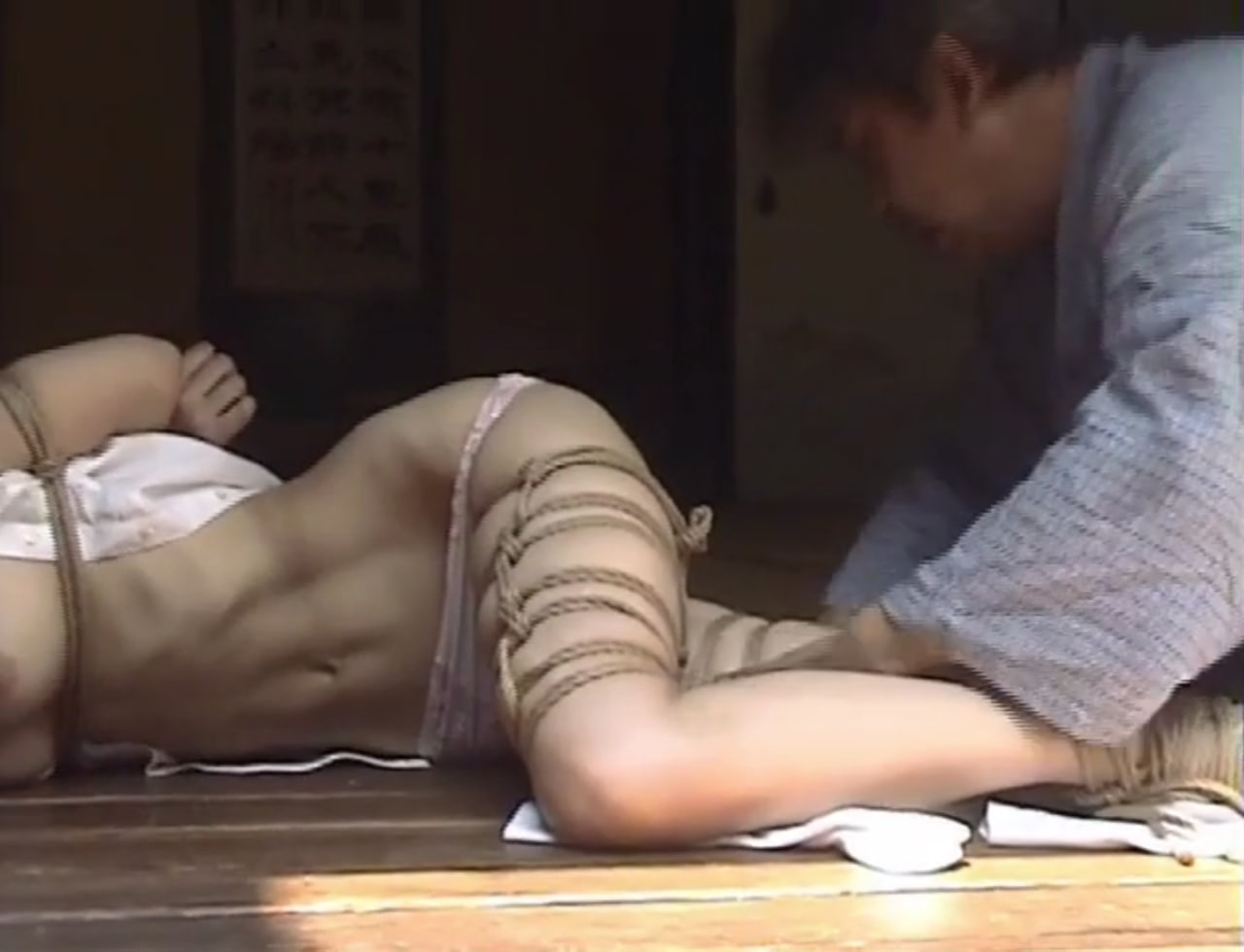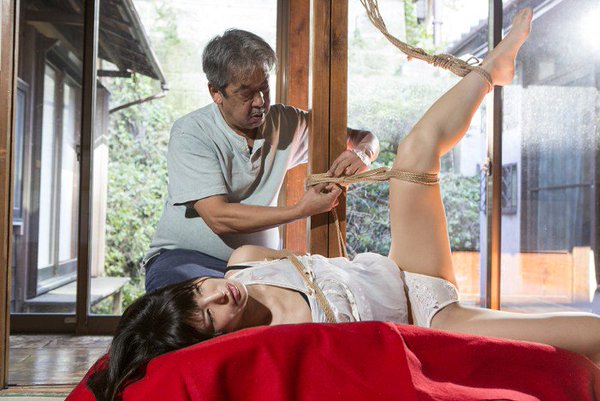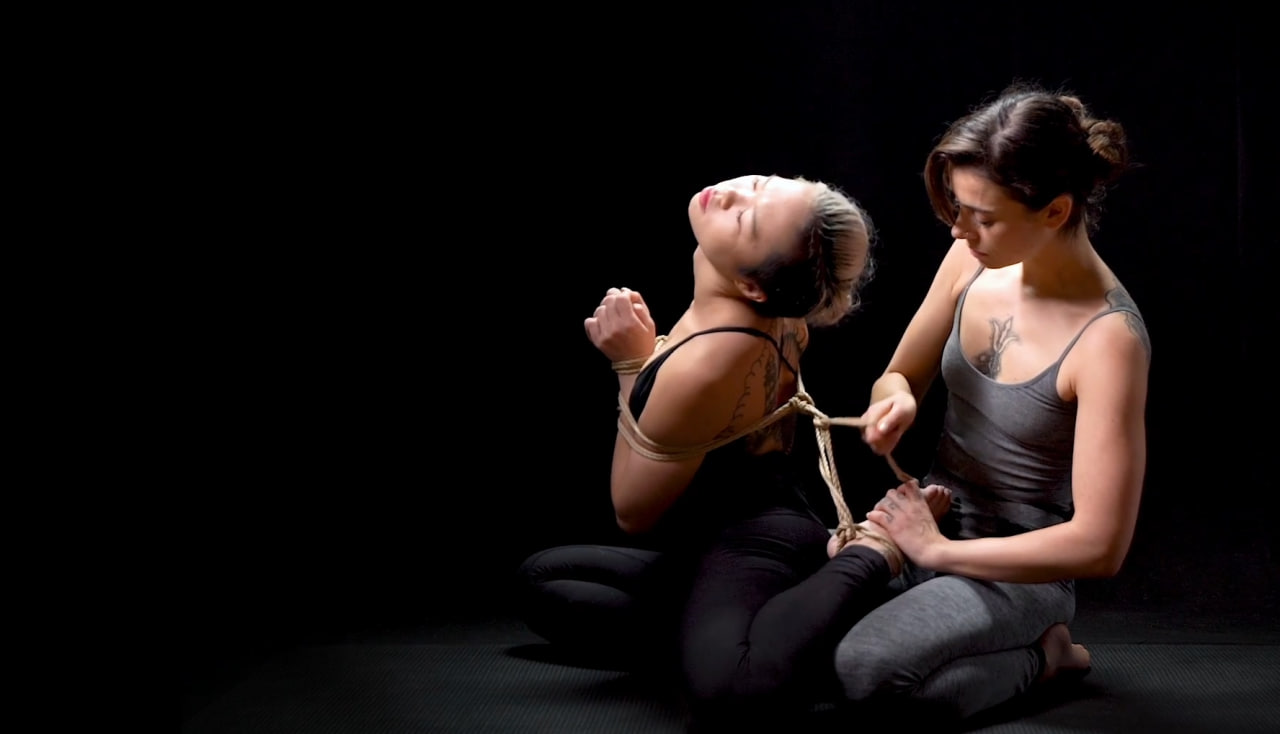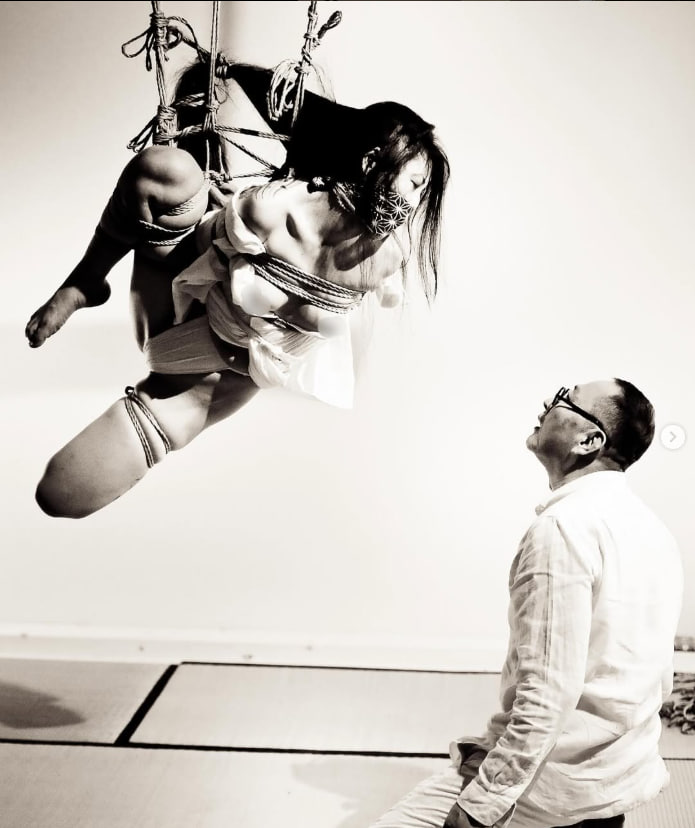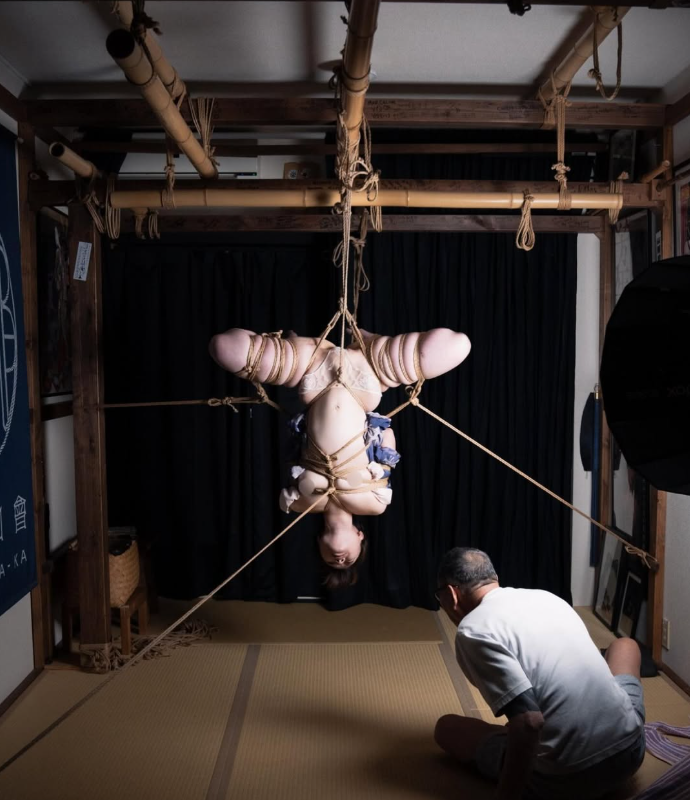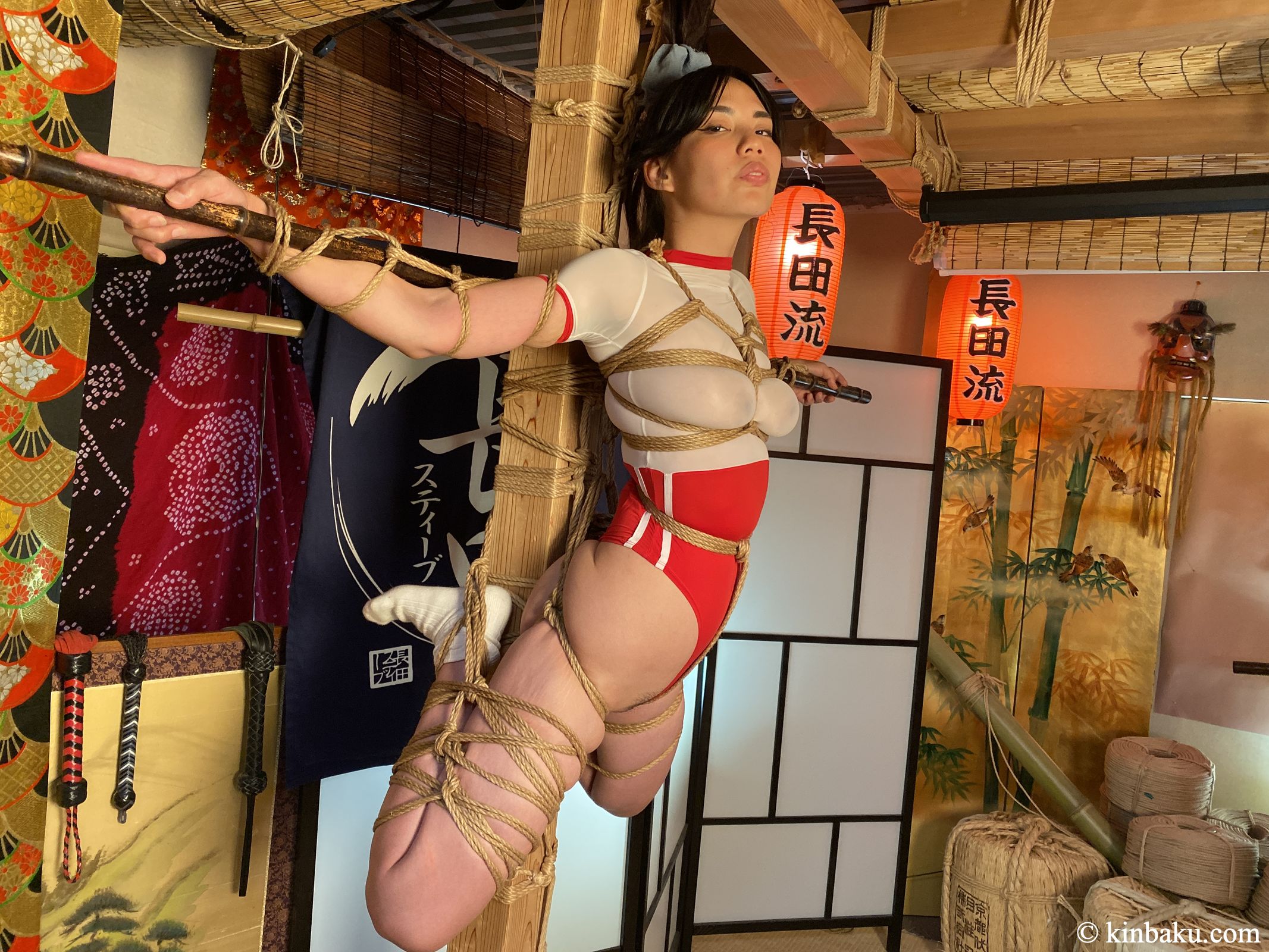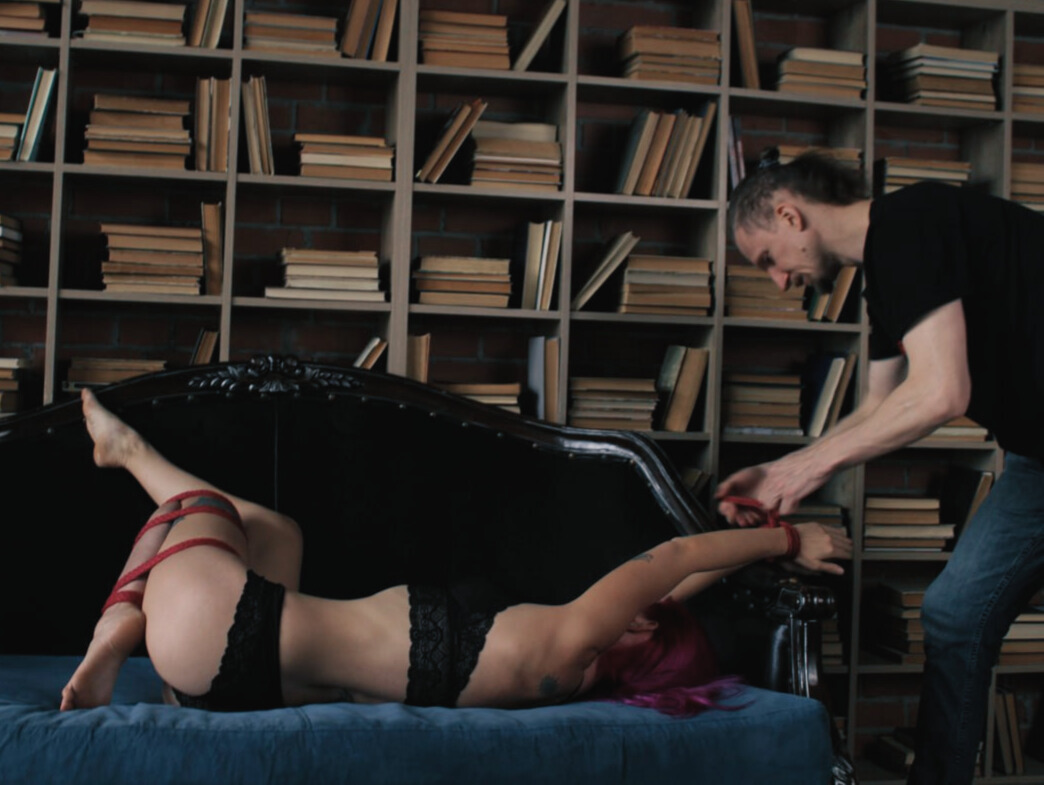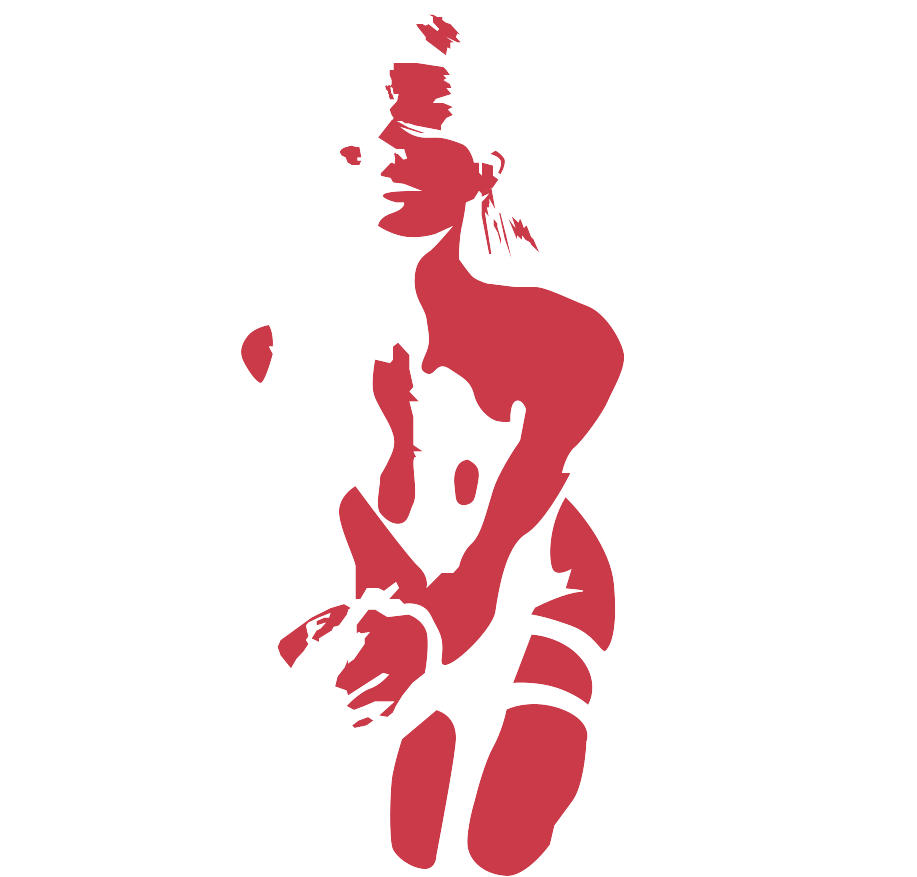Shibari and Kinbaku styles and techniques:
Traditional
Newaza Shibari - techniques for working on the floor. The term comes from the martial arts (judo) and is used to refer to shibari/kinbaku performed on the mat, as opposed to the suspended techniques of Tsuri. This style of shibari can be very sensual and erotic.
Ichinawa Shibari is a single-rope technique that does not involve complex tying or weaving, but at the same time is very effective and efficient in terms of states. Usually one rope is used per body part, for example: one for the body, one for the arms and one for the legs. It is used by masters as an introductory one or at the beginning of the session to feel and relax the model.
Tsuri is any rope suspension. The model is tied up and suspended from a secure hanging point. A classical torture technique from Tokugawa times (tsutizeme) that has become widespread and is used in shibari sessions and performances. There are many types of suspensions, but all of them must be performed with due care and skill. Sometimes the term is shortened to zuri.
Semenawa - translated as ‘torture rope’ and has a strong emphasis on pain (also punishment). Also Gomon shibari from: Gomon (拷問) - torture - a general and somewhat archaic term for a harness designed to torment or punish a partner. An element of the SM game.
New and modern
K-Shibari - Shibari, in which, in addition to binding, the emphasis is on states. The sessions include the following stages: model preparation, introduction to the technique and the master, binding and play, and post-session care. During the stages, we use keys of states taken from yoga, meditation, understanding of the principles of the endocrine system, psychology, and tantra.
Roots or related
Hayanawa (or ‘quick rope’) is a style of Hojo-jutsu, a martial art of tying that was popular in the Edo period (1603-1868). A strong, thin cord was used for this purpose. This is a very fast binding technique, and police officers used it in case of arrest when the prisoner was actively resisting.
Hojojutsu (less commonly Hojojitsu) is an ancient martial art of capturing an enemy with a rope. In some historical works, it is referred to as nawajutsu.
Takenotsue or Takenzao shibari - binding with a bamboo stick. There are many styles that date back to feudal Japan.
Other
Circus - spectacular strapping mixed with tricks and spectacular interaction with the audience, usually having little to do with shibari sessions.
Aesthetic rope bondage - in this trend, ties are usually made that are not designed to support weight or have tension and are not intended to create states other than aesthetic pleasure. Some ties are traumatic for shibari tsuri.

